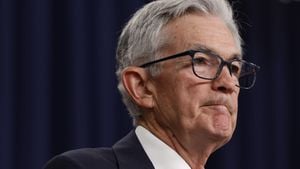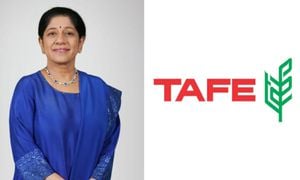The number of new cars sold in the U.S. during September 2024 is projected to be lower than the figures recorded for the same month last year. While J.D. Power and GlobalData predict a notable decrease, it seems there are enough silver linings to keep both buyers and industry experts optimistic.
According to the latest joint forecast from J.D. Power and GlobalData, retail and non-retail new vehicle purchases for September 2024 are expected to total around 960,500 units. This marks a 13.2 percent drop from September 2023, which recorded 1,129,659 new cars sold. A substantial factor contributing to this decline is the Labor Day weekend's timing, affecting auto sales calendars significantly.
Unlike regular months running Sunday through Saturday, sales months for vehicles depend on actual selling days. This year, there were only 23 selling days available for September, compared to 26 days last year. Adjusted for these selling days, the anticipated sales volume is only about 1.8 percent less than the previous year's figures. "September sales volumes will be lower than a year ago due to the calendar quirk of the Labor Day holiday falling within the August sales month," cautioned Thomas King, President of Data and Analytics at J.D. Power.
Interestingly, when combining the sales figures from August and September 2024 and comparing them with their counterparts from August and September 2023, there seems to be light at the end of the tunnel. The two firms anticipate a slight increase of 0.2 percent for Q3 2024 compared to the same quarter last year, even with two fewer selling days.
What might benefit consumers as the year progresses? According to Tony Salerno, Managing Director at J.D. Power, three primary factors will influence auto sales moving forward: discounts on vehicles introduced by both manufacturers and dealers, fluctuated interest rates, and the continued value of vehicle trade-ins. There’s hope for significant markdowns as car manufacturers shift focus toward more affordable vehicles.
The anticipated average incentive spend per vehicle has soared, jumping by 63.2 percent from last September to reach approximately $3,047 this year. This increase, Salerno reiterated, stems largely from original equipment manufacturers' incentives combined with dealer discounts. "Most automakers have managed their inventory levels fairly well, but if days' supply begins to increase, we can expect to see even more incentives going forward," he stated.
Despite these promising aspects for buyers, challenges remain for car dealerships. Salerno mentioned shifting customer preferences toward more budget-friendly vehicle models has driven down the average transaction price per vehicle by over $1,000, bringing it down to $44,467—a decline of 2.8 percent from last September. Consequently, this means consumers are predicted to shell out nearly $40.4 billion on new vehicles this month, reflecting a staggering 16.8 percent drop compared to September 2023.
Simultaneously, rising inventories have played their part. Retail inventory is slated to reach 1.8 million units, which shows not only a 6.2 percent increase from August but also highlights a staggering 30.7 percent increase from September 2023. While rising inventories typically lead to larger markdowns, the effects aren't uniform across all brands. Some popular vehicles continue to experience scarcity, keeping prices high.
Another challenge arises from the pandemic’s long-lasting effects on purchasing habits. With new vehicles being scarce during the COVID-19 pandemic, many consumers chose to extend their leases or simply wait for the market to improve before making new purchases. This month, lease expirations dropped by 28 percent compared to last year, leading to fewer opportunities for new sales as customers are taking their time to decide on trading-in their vehicles.
Looking at larger economic circumstances, there’s concern over persistent inflation and uncertainty, which has been causing consumers to be more cautious. Despite recent interest rate cuts, many are still waiting to see how the market stabilizes post-November before making significant purchases. Salerno remarked, "Uncertainty greatly impacts consumer buying behavior, influencing decisions and perceived risks. Once November is behind us, perhaps we will start to see consumers feeling more certain and making moves toward buying new vehicles they’ve been eyeing."
Among brands, some are positioned to gain significantly from the current market trends, with Toyota and Honda noted for showing growth well above the overall industry average. Both companies have fresh, attractive lineups, such as the redesigned hybrid Toyota Camry and the family-friendly Honda CR-V. Conversely, brands like Chevrolet, Kia, Jeep, and Tesla are facing difficulties.
Despite experiencing some setbacks, Chevrolet has some plans to remedy its fortunes. Both the combustion and electric versions of the Equinox have launched recently, along with new models of the Silverado EV and the Traverse, hinting at potential recovery later this year. Yet, Jeep and other Stellantis brands are struggling due to aging model lines, with more incentives expected as the year draws to a close. Tesla’s recent declines have been well-documented as the brand encounters increased competition and the challenge of bridging the gap between early adopters and mainstream buyers.
Lastly, natural disasters like Hurricane Helene also add layers to this complex situation. Although J.D. Power and GlobalData do not plan to change their initial forecasts for September, the hurricane's impact will certainly be felt. According to Salerno, weather-related events often only delay sales rather than drastically alter them. After the storm subsides, lost sales typically bounce back as consumers look to replace damaged vehicles. Overall, the automotive market seems to be moving through challenging times but remains adaptable and focused on the future—it’s clear consumers are still active when it concerns spending on vehicles, albeit with caution.
While dealership profits are projected to dip by 29 percent this September compared to last year, the movement among consumers and car manufacturers/retailers toward increased affordability and discounts may facilitate smoother transactions as the holiday season approaches. Combined with the natural ebbs and flows of the economy and consumer sentiment, it creates quite the rollercoaster ride for buyers and dealers alike as we move toward the end of 2024.



